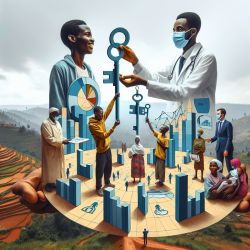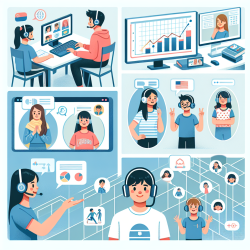Introduction
The COVID-19 pandemic has amplified the challenges faced by adolescents and youth in accessing sexual and reproductive health (SRH) services, particularly in humanitarian settings like the Mahama Refugee Camp in Rwanda. A recent study by Save the Children highlights the pressing needs and barriers faced by this vulnerable population. This blog explores the study's findings and provides actionable insights for practitioners to enhance SRH services for adolescents and youth.
Key Findings from the Study
The study utilized the SenseMaker approach to collect data from 745 adolescents and youth in Mahama camp and the surrounding host community. It revealed several critical barriers to accessing SRH services:
- Stigmatization and Bias: Many adolescents reported experiencing stigmatization and judgmental attitudes from service providers, which hindered their access to essential SRH services.
- Service Disruptions: The pandemic led to reduced availability of SRH services, with some services being discontinued or delayed due to COVID-19 protocols.
- Inadequate Information: Adolescents lacked access to reliable SRH information, exacerbating their vulnerability to unplanned pregnancies and sexually transmitted infections (STIs).
Opportunities for Improvement
Despite these challenges, the study also identified opportunities for enhancing SRH services for adolescents and youth:
- Dedicated Youth Staff: Increasing the number of dedicated staff for adolescents and youth can help create a more welcoming and supportive environment. Peer educators and youth-friendly staff can play a crucial role in facilitating access to SRH services.
- Youth Integrated Programs: Restarting and expanding youth programs that offer SRH education and services can empower adolescents to make informed decisions about their health.
- Community Engagement: Engaging community members, including parents and leaders, in SRH education can help reduce stigma and support adolescents in accessing the services they need.
Actionable Steps for Practitioners
Practitioners can leverage these findings to enhance SRH services for adolescents and youth in humanitarian settings:
- Review Protocols: Examine and revise protocols to ensure that adolescents can access SRH services without unnecessary barriers, such as requiring a partner's presence for certain services.
- Enhance Training: Provide training for health staff, community health workers, and peer educators on adolescent-friendly SRH service provision to reduce biases and improve service delivery.
- Expand Outreach: Utilize diverse communication channels, such as community mobilization activities and digital platforms, to disseminate SRH information and engage adolescents and youth.
Conclusion
The study underscores the urgent need to prioritize SRH services for adolescents and youth in humanitarian settings, especially during overlapping crises like the COVID-19 pandemic. By addressing the identified barriers and leveraging the opportunities for improvement, practitioners can create a more supportive and effective SRH service environment for young people.
To read the original research paper, please follow this link: Understanding the Sexual and Reproductive Health Experiences of Refugee and Host Community Adolescents and Youth in Rwanda During COVID-19: Needs, Barriers, and Opportunities.










